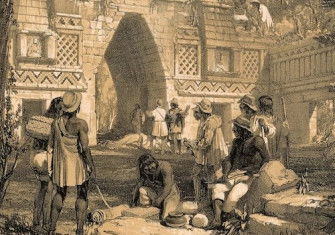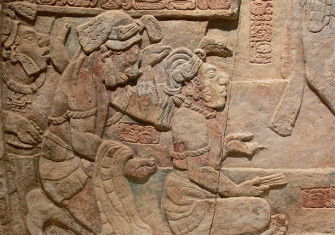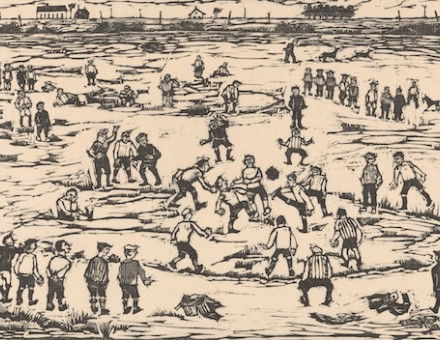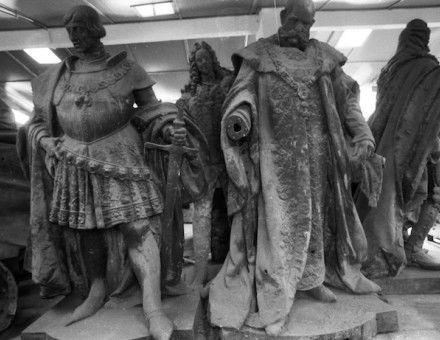Mayas: Revelation of an Endless Time
Beyond the stereotypes of bloodthirsty savagery and false predictions of Armageddon.
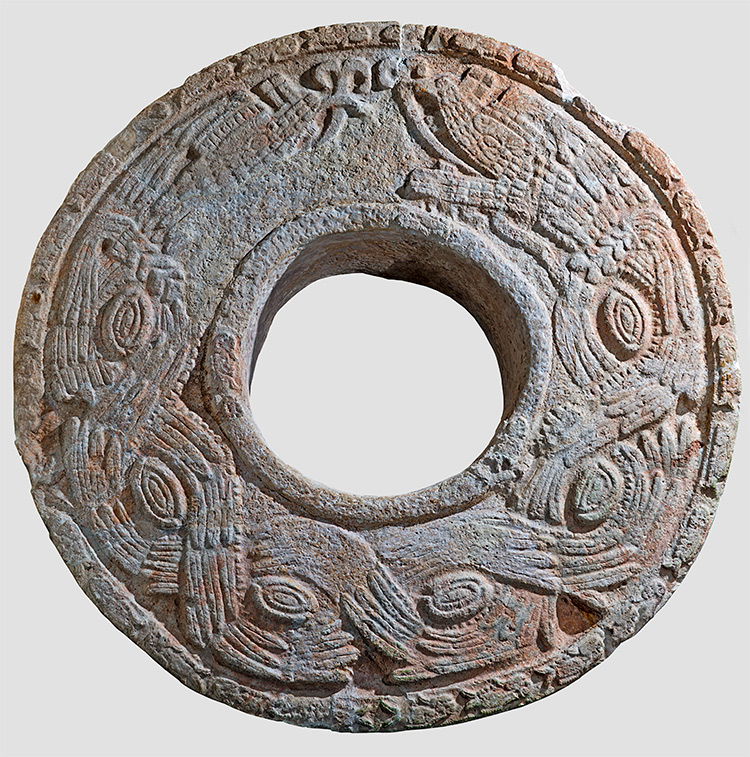 When Mel Gibson's 'Mayan epic', Apocalypto, was released in 2006 it received an inevitable (and deserved) backlash for its portrayal of this great civilisation as a savage and brutal people who needed to be saved from themselves by the arrival of the Spanish conquistadors. Despite the veneer of authenticity in filming the dialogue in Yucatec Maya, the movie displayed an abundance of historical and factual inaccuracies throughout, from conflating the Maya with the Aztecs, to falsely aligning the time of the Classic Maya collapse with the arrival of the Spaniards. Fast-forward six years and conspiracy theorists the world over anxiously awaited the 'Mayan Apocalypse' on December 21st, 2012, widely believed to be the date that the Maya prophesied the world would end. Of course 2013 arrived without incident, but the strange theories continue unabated: bizarre links to the lost city of Atlantis, and even claims that the Maya had contact with extra-terrestrials.
When Mel Gibson's 'Mayan epic', Apocalypto, was released in 2006 it received an inevitable (and deserved) backlash for its portrayal of this great civilisation as a savage and brutal people who needed to be saved from themselves by the arrival of the Spanish conquistadors. Despite the veneer of authenticity in filming the dialogue in Yucatec Maya, the movie displayed an abundance of historical and factual inaccuracies throughout, from conflating the Maya with the Aztecs, to falsely aligning the time of the Classic Maya collapse with the arrival of the Spaniards. Fast-forward six years and conspiracy theorists the world over anxiously awaited the 'Mayan Apocalypse' on December 21st, 2012, widely believed to be the date that the Maya prophesied the world would end. Of course 2013 arrived without incident, but the strange theories continue unabated: bizarre links to the lost city of Atlantis, and even claims that the Maya had contact with extra-terrestrials.
With such preconceptions of the Maya already in existence it is not at all surprising that an exhibition produced by the Mexican National Institute of Anthropology and History (Instituto Nacional de Antropología e Historia) would want to distance itself from stereotypes of bloodthirsty savagery and entirely false predictions of Armageddon. Thankfully, Mayas: Revelation of an Endless Time fulfils this brief in spades. The exhibition at the World Museum in Liverpool, which is free to enter and is open until October 18th, 2015, presents 385 objects from all over the Mayan territories of Mesoamerica, ranging from the Early Classic (AD 250-600) to the post-Classic (AD 900-1250) periods of Maya civilisation. These artefacts are displayed in a space that exudes calm; depictions of human sacrifice are not sensationalised, for example, and the aim is not to shock.
The objectives of this exhibition are not to 'other' the Maya, but rather to show them as a human civilisation, and importantly as a culture that still exists today. As such, the key themes presented are those of sophistication and continuity. That is not to say that concepts such as sacrifice, which are obviously difficult for many people in the 21st century to process, are avoided or erased: this is not a sanitised display. A very large sculpture from the late Classic period (AD 600-900) of a sacrificial victim lying on their back having had their heart extracted, takes centre stage in the final section of the exhibition. There are also exhibits depicting auto-sacrifice, including two male figures from the Late Classic site of Campeche, whose faces are twisted in agony. They are performing a particularly eye-watering ritual: that of perforating the penis with an awl, a spiked tool typically made from bone, obsidian or stingray spines, in order to offer their blood to the gods. However, these displays of painful self-mutilation and ritual killing are presented in conjunction with other elements of religion and habitual practices, rather than having a section exclusively dedicated to sacrifice. The result is that the visitor is provided the opportunity to view these aspects of Maya culture in context, because in reality, sacrifice was only a small facet of Maya life.
The exhibition consists of eight sections, or themes, each depicting different aspects of Maya life and culture. The objects displayed in each are not grouped by chronology or geography; instead, the themes themselves are what link the artefacts. As such, as the visitor is guided through Maya society and daily life they are presented with a sense of unity in the Maya territories and continuity throughout the civilisation. The timeline that greets you upon entering the exhibition succeeds in its aims of providing a sense of the longevity of the Maya, and its comparison with other civilisations is particularly effective. Perhaps most surprising to those unfamiliar with Mexican history is that the Aztecs, to whom the Maya are so often compared, rose and fell within three hundred years, culminating with an empire that lasted for less than a century before the fall of Tenochtitlan in 1521. In contrast, the beginnings of Maya civilisation can be traced to the early formative villages, which were in existence from around 1500 BC and though the Maya reached their peak in terms of sophistication c.AD 600-900, the civilisation endured until the Spanish conquest of the Yucatan in the 16th century.
The rise and fall of various key city states is also presented in the timeline; however, what has been termed by academics as the 'Classic Maya Collapse' beginning in the late eighth century and complete by the beginning of the tenth, is portrayed more as a migration northwards to the territories in the Yucatan. This is an interesting take on the phenomenon that has led to endless unresolved debate as to why the great cities of the central lowland territories were very suddenly and completely abandoned, all in little over 100 years. Key theories include natural disasters such as drought, earthquakes and hurricanes, and man-made issues such as over-farming, warfare, civil unrest and even invasion. By avoiding any in-depth discussion of a collapse, the visitor instead gets a sense of continuity, which is further reinforced by the lack of geographical or chronological division between the objects on display. Competition between city states and diversity in style is not really examined, though warfare and diplomacy is presented. The exhibition also provides an insight into cultural practices that have endured, emphasising that despite the fall of the civilisation and almost total devastation of the Maya population following the Spanish conquest, the Maya people still exist today.
The exhibition also reveals how on-going discoveries and excavations continue to further our knowledge, and many of the objects are positioned as they would be at the sites themselves. Funerary offerings placed in a mock-up of an archaeological dig provide a wonderful insight for the visitor into how the objects were found among remains of the deceased, and the ballgame ring from Chichen Itza is displayed up high to give an idea of how it would appear on the wall of the court. Without visiting the city sites themselves, standing among what is left of the ruins and climbing the enormous temples, it is very hard to get a feel for the magnificence of the Maya civilisation, but this exhibition goes a long way in conveying this by showcasing the artefacts in an incredibly thoughtful manner, attempting to place them in context and allowing the objects to speak for themselves.
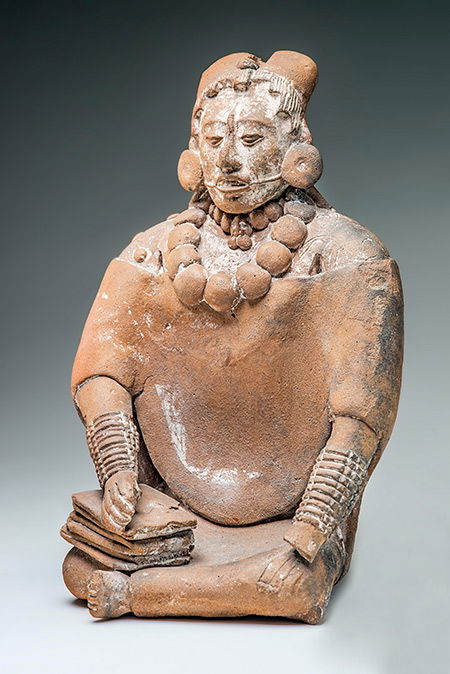
One of the most informative sections of the exhibition explores the Maya calendar. An interactive feature allows you to not only see how the interlocking systems functioned, and how the Maya calendar corresponds with our own Gregorian system; you can also find particular days, such as your birthday, and look them up in the Maya calendar. Alongside this, a short documentary explains how the calendar was deciphered by first unlocking the numerical system. This painstaking process, which did not see any major breakthroughs until the 19th century, is well explained and includes an interview with leading Mayanist, Michael D. Coe. The sophistication of the Maya system is clearly demonstrated, along with its importance to our existing knowledge of their civilisation as a whole. The Maya fastidiously dated their monuments, many of which recount dynastic histories, which means that we can now very accurately trace the rise and fall of each city. For example, this is how we know that the collapse of the Classic Maya happened at all, because the frequent inscriptions on display in each city suddenly ceased. Testament to the calendar's importance is the fact that prior to cracking the system, those studying the Maya, including the Spanish friars of the 16th century, had no idea how old the civilisation actually was.
Key also to understanding Maya history was the deciphering of their writing system, which was not fully understood until the 20th century. A controversial figure from the 16th century, the Dominican friar and later Bishop of the Yucatan, Diego de Landa, played an invaluable role in this task as he created a dictionary of the Maya script. He is mentioned only briefly in the documentary, but is portrayed negatively in the timeline at the entrance to the exhibition, due to his burning of many Maya codices and other cultural artefacts during the auto de fé that he presided over in Mani, on July 12th, 1562. Landa's brutal inquisition led to many being tortured and it was deemed by contemporaries as an excessive and illegal measure, for which he was investigated and put on trial back in Spain. The unwillingness to provide credit for Landa's contribution to our knowledge about the Maya is understandable; nevertheless, it is impossible to deny his importance, or that of any of the other Spanish friars who painstakingly recorded language systems and various aspects of indigenous life throughout Mesoamerica. The paradox is that they were chroniclers and preservers of history on the one hand, and eradicators of cultural practices on the other. Also, the fact that their interpretation of indigenous culture was tainted by their desire to place the Mesoamerican people within their understanding of the world: i.e. within the history of mankind depicted in the bible, continues to muddy our own investigations to this day.
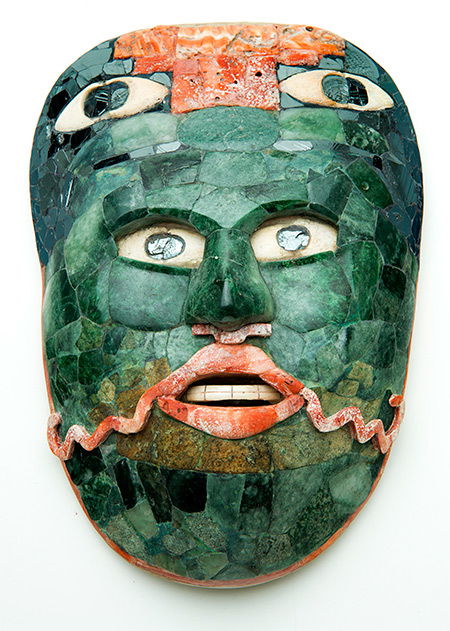
Despite the extent of this destruction, the Maya civilisation has endured through what they have left behind. The late Classic funerary masks in the section entitled 'Entering the Path: Maya Funeral Rites' provide an apt demonstration of this: a permanent visage made from precious stones, such as jade, would be created for the rulers of great cities to preserve their spirit. These masks were placed on the face after death to replace the flesh that would decompose, ensuring the wearer's immortality. As the visitor here in the UK in 2015 looks upon the undying faces of these rulers – men who died over a thousand years ago and thousands of miles from here – the success of their quest for immortality cannot be denied. Despite the fall of their once great civilisation, the Maya live on.
Mayas: Revelation of an Endless Time is at the World Museum, Liverpool until October 18th 2015.
Amy Fuller is Lecturer in the History of the Americas at Nottingham Trent University. She is the author of Between Two Worlds: The autos sacramentales of Sor Juana Inés de la Cruz (MHRA, 2015). Follow her on Twitter @amyfullermorgan



